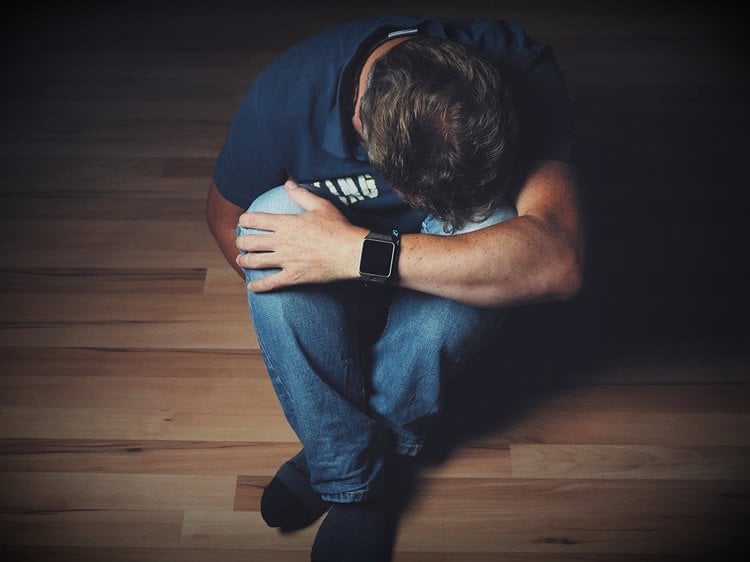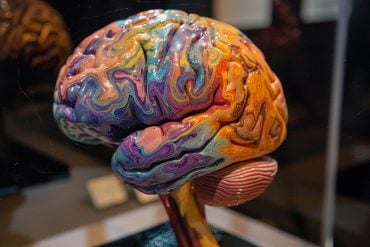Summary: Daily use of cannabis with high concentrations of THC is linked to an increased risk of experiencing psychosis-like symptoms.
Source: King’s College London
New research from King’s College London is the first to show the impact of cannabis use on population rates of psychosis, highlighting the potential public health impact of changes to cannabis legislation.
The study of 11 sites across Europe, published in The Lancet Psychiatry, finds daily cannabis use, especially of high potency cannabis, is strongly linked to the risk of developing psychosis. In cities where high potency cannabis is widely available, such as London and Amsterdam, the study finds a significant proportion of new cases of psychosis are associated with daily cannabis use and high potency cannabis.
Many countries have legalized or decriminalized cannabis use, leading to concerns that this might result in an increase in cannabis use and associated harms. Observational studies and biological evidence support a causal link between cannabis use and psychosis, but until now, it has been unclear whether, at a population level, patterns of cannabis use influence rates of psychosis.
Dr. Marta Di Forti, the lead author from the Institute of Psychiatry, Psychology & Neuroscience, says: ‘Our findings are consistent with previous studies showing that the use of cannabis with a high concentration of THC has more harmful effects on mental health than the use of weaker forms. They also indicate for the first time how cannabis use affects the incidence of psychotic disorder at a population level.’
‘As the legal status of cannabis changes in many countries and states, and as we consider the medicinal properties of some types of cannabis, it is of vital public health importance that we also consider the potential adverse effects that are associated with daily cannabis use, especially high potency varieties.’
The researchers estimated the prevalence of psychosis by identifying all individuals with first episode psychosis who presented to mental health services between 2010 and 2015. Secondly, they compared 901 patients with first episode of psychosis with 1,237 healthy controls to understand the risk factors associated with psychosis.
The researchers collected information about participants’ history of cannabis use and other recreational drugs. Using published data on levels of delta-6-tetrahydrocannabinol (THC), they estimated cannabis potency for the types of cannabis used by participants, and classified types as either high potency (over 10% THC) or low potency (under 10% THC).
Daily cannabis use was more common among patients with first-episode psychosis, compared to controls. 29.5% (266/901) of patients reported using cannabis daily, compared with 6.8% (84/1237) of controls. High potency cannabis use was also more common among patients with first-episode psychosis, compared to controls. 37.1% (334/901) of patients reported using high potency cannabis, compared with 19.4% (240/1237) of controls.
Once adjusted for other factors, the authors found that across the 11 European sites, people who used cannabis on a daily basis were three times more likely to have a diagnosis of first episode psychosis, compared with people who had never used cannabis. This increased to five times more likely for daily use of high potency cannabis.
The authors estimate that one in five new cases (20.4%) of psychosis across the 11 sites may be linked to daily cannabis use, and one in ten (12.2%) linked to use of high potency cannabis.

Use of high potency cannabis was a strong predictor of psychotic disorder in Amsterdam and London, where high potency cannabis is widely available. In the Netherlands, the THC content reaches up to 67% in Nederhasj, and 22% in Nederwiet; in London, skunk-like cannabis (average THC 14%) represents 94% of the street market, whereas in countries like Italy, France, and Spain, herbal types of cannabis with THC content of less than 10% were still commonly used.
For example, in Amsterdam, four in 10 (43.8%) new cases of psychosis were estimated to be linked to daily cannabis use, and 5 in 10 (50.3%) new cases linked to high potency use. Corresponding rates in London were 21.0% for daily use, and 30.3% for high potency use.
If high potency cannabis were no longer available, the incidence of psychosis in Amsterdam would be expected to drop from 37.9 to 18.8 per 100,000 people per year; and in London from 45.7 to 31.9 per 100,000 people per year.
Source:
King’s College London
Media Contacts:
Dr Marta Di Forti – King’s College London
Image Source:
The image is credited to UPF.
Original Research: Open access
“The contribution of cannabis use to variation in the incidence of psychotic disorder across Europe (EU-GEI): a multicentre case-control study”
Marta Di Forti, PhD, Diego Quattrone, MD, Tom P Freeman, PhD, Giada Tripoli, MSc, Charlotte Gayer-Anderson, PhD, Harriet Quigley, MD, et al. The Lancet Psychiatry doi:10.1016/S2215-0366(19)30048-3
Abstract
The contribution of cannabis use to variation in the incidence of psychotic disorder across Europe (EU-GEI): a multicentre case-control study
Background
Cannabis use is associated with increased risk of later psychotic disorder but whether it affects incidence of the disorder remains unclear. We aimed to identify patterns of cannabis use with the strongest effect on odds of psychotic disorder across Europe and explore whether differences in such patterns contribute to variations in the incidence rates of psychotic disorder.
Methods
We included patients aged 18–64 years who presented to psychiatric services in 11 sites across Europe and Brazil with first-episode psychosis and recruited controls representative of the local populations. We applied adjusted logistic regression models to the data to estimate which patterns of cannabis use carried the highest odds for psychotic disorder. Using Europe-wide and national data on the expected concentration of Δ9-tetrahydrocannabinol (THC) in the different types of cannabis available across the sites, we divided the types of cannabis used by participants into two categories: low potency (THC <10%) and high potency (THC ≥10%). Assuming causality, we calculated the population attributable fractions (PAFs) for the patterns of cannabis use associated with the highest odds of psychosis and the correlation between such patterns and the incidence rates for psychotic disorder across the study sites.
Findings
Between May 1, 2010, and April 1, 2015, we obtained data from 901 patients with first-episode psychosis across 11 sites and 1237 population controls from those same sites. Daily cannabis use was associated with increased odds of psychotic disorder compared with never users (adjusted odds ratio [OR] 3·2, 95% CI 2·2–4·1), increasing to nearly five-times increased odds for daily use of high-potency types of cannabis (4·8, 2·5–6·3). The PAFs calculated indicated that if high-potency cannabis were no longer available, 12·2% (95% CI 3·0–16·1) of cases of first-episode psychosis could be prevented across the 11 sites, rising to 30·3% (15·2–40·0) in London and 50·3% (27·4–66·0) in Amsterdam. The adjusted incident rates for psychotic disorder were positively correlated with the prevalence in controls across the 11 sites of use of high-potency cannabis (r = 0·7; p=0·0286) and daily use (r = 0·8; p=0·0109).
Interpretation
Differences in frequency of daily cannabis use and in use of high-potency cannabis contributed to the striking variation in the incidence of psychotic disorder across the 11 studied sites. Given the increasing availability of high-potency cannabis, this has important implications for public health.
Funding source
Medical Research Council, the European Community’s Seventh Framework Program grant, São Paulo Research Foundation, National Institute for Health Research (NIHR) Biomedical Research Centre (BRC) at South London and Maudsley NHS Foundation Trust and King’s College London and the NIHR BRC at University College London, Wellcome Trust.






